The window installation industry is continuously evolving, with new innovations and trends shaping the future of how we design, manufacture, and install windows in our homes. As technology advances and consumer preferences change, we can expect to see significant developments in the materials, designs, and installation methods used in the coming years. In this article, we’ll explore some of the key innovations and trends that are set to shape the future of window installation.
Material Innovations
One of the most significant areas of innovation in the window installation industry is the development of new materials that offer improved performance, energy efficiency, and durability. Some notable material innovations include:
Fiberglass Windows
Fiberglass windows are becoming increasingly popular due to their superior strength, durability, and thermal performance1. These windows are made from glass fibers embedded in a resin matrix, which results in a material that is highly resistant to warping, rotting, and corrosion. Additionally, fiberglass windows have excellent insulating properties, helping to reduce heat transfer and improve energy efficiency.
Composite Windows
Composite windows are another emerging trend in the window installation industry, offering a combination of materials that provide exceptional performance, durability, and aesthetics. Typically made from a mixture of wood fibers and thermoplastic resins, composite windows are designed to mimic the appearance of traditional wood windows while providing enhanced resistance to moisture, decay, and insect damage2. These windows also require minimal maintenance, making them an attractive option for homeowners seeking a low-maintenance alternative to traditional wood windows.
Design Innovations
As consumer preferences evolve, we are seeing a growing demand for unique and innovative window designs that combine functionality with aesthetics. Some of the latest design trends in the window installation industry include:
Larger Windows and Expansive Views
One of the most notable design trends in recent years is the increasing popularity of large windows that offer expansive views and increased natural light. Homeowners are seeking designs that blur the lines between indoor and outdoor spaces, with floor-to-ceiling windows and sliding glass doors becoming increasingly popular options. These designs not only enhance the visual appeal of a home but also improve energy efficiency by reducing the reliance on artificial lighting during daylight hours3.
Smart Windows
Smart windows are set to revolutionize the window installation industry, offering homeowners increased control over their home’s comfort, security, and energy efficiency. These windows incorporate advanced technologies, such as electrochromic glass, which can change its opacity in response to an electrical current4. This allows homeowners to control the amount of light and heat entering their homes, reducing energy consumption and improving overall comfort. Additionally, smart windows can be integrated with home automation systems, enabling remote operation and monitoring for enhanced security and convenience.
Installation Method Innovations
As technology advances, we can expect to see significant improvements in the methods used to install windows, resulting in faster, more efficient, and less invasive installation processes. Some key innovations in this area include:
Prefabricated Window Systems
Prefabricated window systems are an emerging trend in the window installation industry, offering a streamlined and efficient approach to window installation. These systems involve the off-site assembly of windows and their associated framing components, which are then transported to the construction site for installation5. This approach reduces on-site labor requirements and minimizes installation time, resulting in cost savings and reduced disruption for homeowners.
3D Printing
Although still in its early stages, 3D printing has the potential to transform the window installation industry by enabling the rapid production of custom window components and assemblies. Using computer-aided design (CAD) software and specialized 3D printers, manufacturers can create bespoke window designs and components that precisely match the specifications of a particular project6. This technology not only offers increased design flexibility but also has the potential to reduce material waste and streamline the installation process.
Finally, the future of window installation is set to be shaped by a range of innovations and trends, with advances in materials, designs, and installation methods promising to deliver improved performance, energy efficiency, and aesthetics. From fiberglass and composite windows to larger window designs and smart technologies, these developments are set to transform the way we think about window installation and revolutionize the industry as a whole. As a homeowner or building professional, staying informed about these trends will help you make informed decisions about the best window solutions for your projects, ensuring that your installations are both cutting-edge and future-proof.
References:
- Builder Online – The Benefits of Fiberglass Windows ↩
- Building Products – Composite Windows: A High-Performance Alternative to PVC and Timber ↩
- Architectural Digest – How Windows Impact Home Design ↩
- Energy.gov – Smart Windows Gain Traction ↩
- U.S. Department of Housing and Urban Development – Prefabricated Exterior Energy Retrofits for Windows ↩
- 3DPrint.com – 3D Printing in the Window and Door Industry ↩

